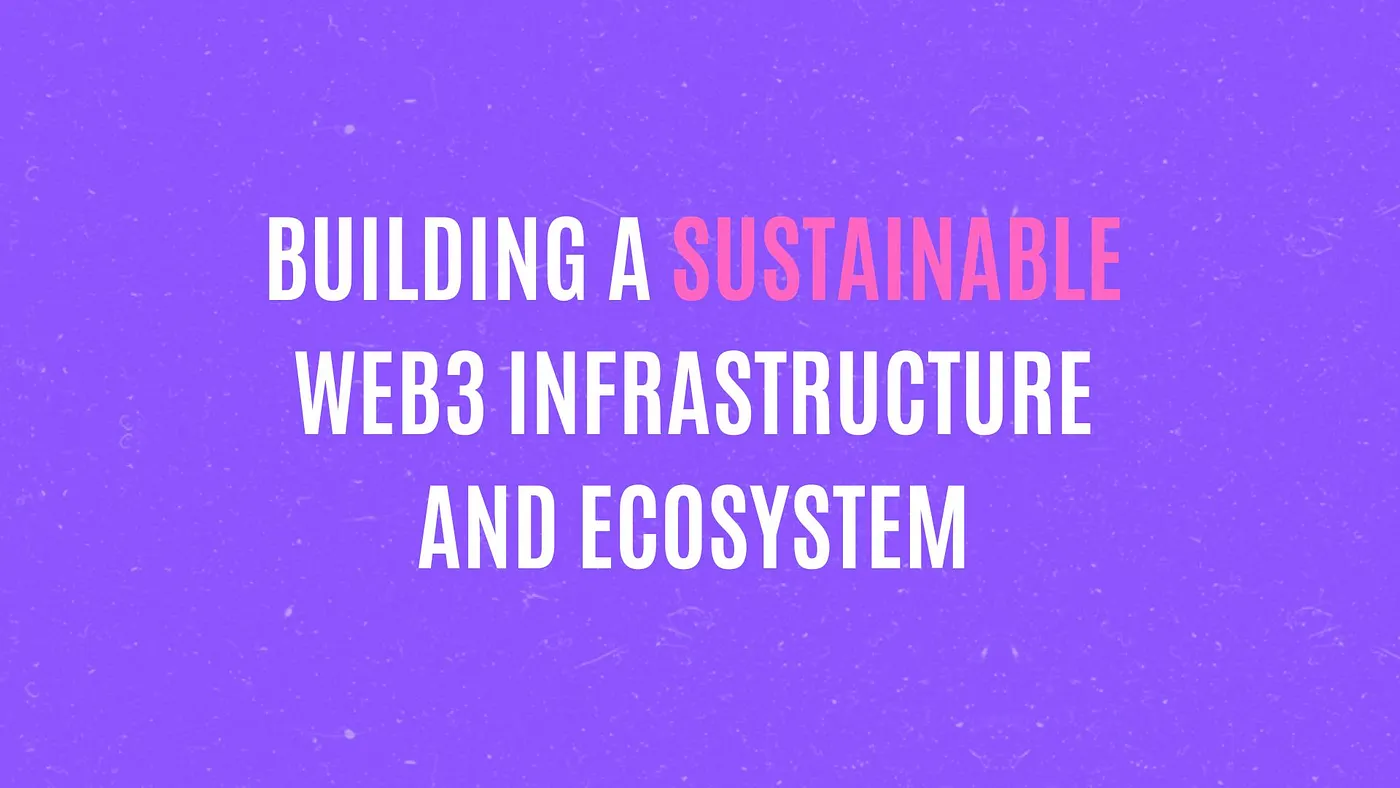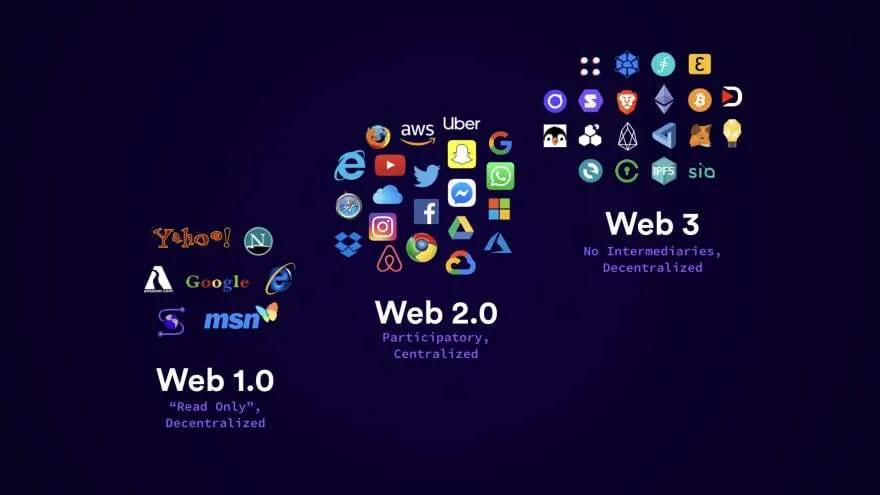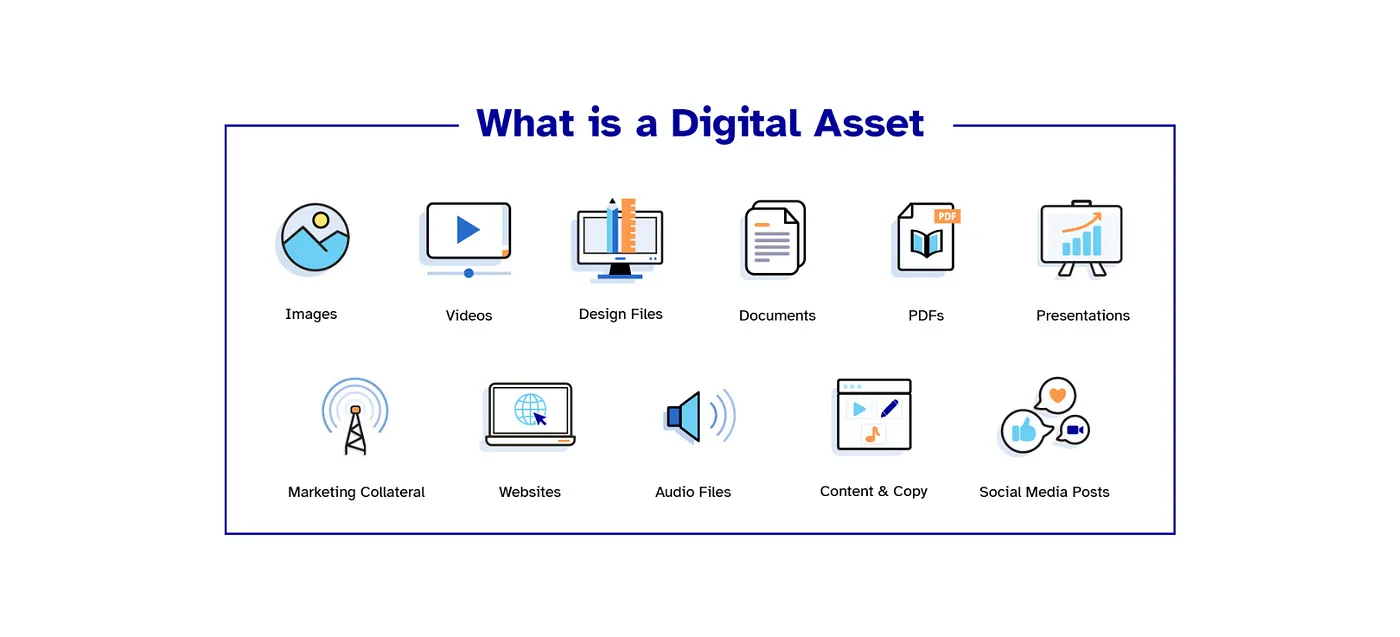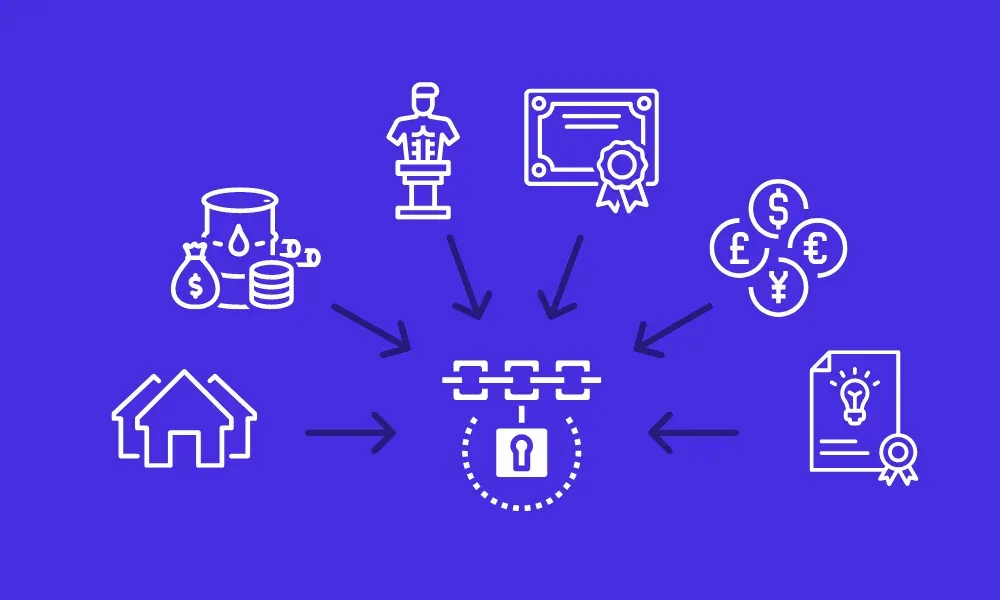Building a Sustainable Web3 Infrastructure and Ecosystem
Published on Feb 20, 2025

Web3 is no longer a fringe experiment.
Ownership, finance, and commerce are moving on-chain, breaking free
from centralized platforms, but without the proper infrastructure in
place, this shift risks losing momentum and failing to scale
effectively.
Web1 brought information online, creating a digital repository of
knowledge. Web2 expanded this by introducing commerce and social
interactions, but it came at a cost as centralized platforms took
control, dictating what people could publish, buy, and own.

Web3 reshapes how we interact online by enabling sovereign ownership,
decentralization, and frictionless transfers, fundamentally redefining
how value moves across the internet. Ideology alone cannot drive
adoption though, it’s the underlying infrastructure that brings this
vision to life and enables it to scale.
The Infrastructure Problem

Web3 has a scaling problem.
It’s not about decentralization, that part actually works.
The real challenge is making it fast, cheap, and usable without
breaking what makes it valuable. Early blockchains proved that
decentralized networks can function, but they also brought to the
surface numerous failures, such as slow transactions, unpredictable
fees, and siloed ecosystems that can’t talk to each other.
Meanwhile, Web2 platforms process thousands of transactions per second
with minimal friction. If Web3 can’t match that, it stays a niche
experiment rather than a legitimate alternative.
UX is the real struggle, and if users need multiple steps just to
complete a simple transaction, or if confirmations take 30 seconds,
they probably won’t stick around too long, and default back to Web2,
where everything just works. Web3 has the tech, but without effortless
onboarding, low-latency interactions, and a fluid experience, it most
likely won’t replace anything, it’ll just be another speculative
playground for insiders.
Scalability is improving, with rollups handling more transactions, and
gas fees coming down, but even as those problems are solved, the issue
of interoperability still looms. Web2 platforms exchange data freely,
but Web3 chains, for the most part, don’t. Ethereum, Solana, Cosmos,
and Polkadot all operate on different architectures, and moving assets
between them isn’t a simple endeavor. In fact, it can be an incredibly
frustrating experience, especially for newbies.
The end result is fragmented liquidity and bottlenecked innovation.
This is why we believe cross-chain infrastructure is so important, and
Uptick’s Cross-Chain Bridge (UCB) and Inter-Blockchain Communication
(IBC) are absolutely necessary for Web3’s survival. They allow
permissionless, direct asset and data transfers, cutting out the need
for centralized intermediaries.
This is about keeping Web3 from becoming a walled garden of
disconnected ecosystems. If Web3 wants to scale, it must solve these
problems in practice, not in theory.
The Shift Towards a Scalable Web3

Web3 is moving past its all-in-one approach.
Instead of forcing everything onto a single chain, networks are
breaking execution, consensus, and data availability into separate
layers. This modular shift is making Web3 faster, cheaper, and more
scalable.
As we just mentioned, cross-chain movement is also evolving. Uptick’s
UCB and IBC integrations enable trustless transfers of tokenized
assets across multiple networks, and these protocols cut out
centralized intermediaries, creating a much more open and efficient
Web3 economy.
Ownership and Interoperability Matter More Than Speed

Scaling Web3 infrastructure is one thing, but actually making it
usable is another.
Speed helps, but without true ownership and interoperability, Web3
risks becoming Web2 with extra steps. Think about Web2 for a moment.
Platforms own the data, assets, and user identities. You can create
content, buy digital goods, or build businesses, but you don’t really
own any of it. Platform rules change overnight, policies shift, and
accounts get shut down without warning.
Web3 is supposed to change that.
Ownership is on-chain, secured by cryptographic guarantees, and
transferable without a middleman. But if assets are locked inside
isolated ecosystems, they lose what makes them special in the first
place, and after all, ownership only matters if it comes with utility.
For Web3 to actually function as intended:
Digital assets must move freely across networks.
Identity credentials should work across ecosystems without
re-verification.
Tokenized assets need to be usable beyond their issuing platforms.
This is where programmable NFTs, DIDs and tokenized RWAs come in.
Uptick’s infrastructure enables assets to exist that aren’t confined
to a single blockchain. Whether it’s fractionalized real estate,
intellectual property, or supply chain assets, they remain usable
across multiple networks.
Web3 should be about making ownership practical, and if assets can’t
move and interact, we’re just adding extra friction to the same old
system.
Breaking Down Silos

Interoperability is what makes Web3 more than a collection of
disconnected chains.
Programmable NFTs take static ownership and turn it into something
dynamic. Built-in logic for leasing, royalties, and automated
conditions means assets aren’t locked into a single platform, and they
can adapt, interact, and function across multiple ecosystems.
Uptick’s W3C standard DID framework allows this to be pushed even
further. Instead of being tied to platform-specific logins, users
control their credentials and verify ownership across multiple
applications. This eliminates the need for centralized gatekeepers,
making authentication smooth across Web3.
The real issue, however, is blockchain silos.
Ethereum, Cosmos, Solana, and Polkadot were each built independently
with its own architecture, token standards, and consensus mechanisms.
What we end up with is fragmented liquidity, trapped assets, and
clunky cross-chain movement. Instead of complementing each other, most
networks still operate in isolation, slowing down adoption, and
promoting tribalism.
This is why scalable cross-chain infrastructure is so important, as a
way to create trust-minimized pathways for asset and data transfers.
What does that actually mean?
No more fragmented markets or restrictive bridging solutions. Just
enhanced liquidity, cross-network composability, and an open, unified
Web3 economy.
The Rise of a Unified Web3 Economy

Interoperability isn’t just a nice-to-have, it’s becoming the default.
More chains are integrating Inter-Blockchain Communication (IBC),
removing friction from asset transfers and making cross-chain
interaction smooth by today’s standards. Meanwhile, bridging solutions
are evolving, with trust-minimized designs reducing risks and
improving liquidity flow across networks.
This shift is changing how value moves in Web3.
Creators can distribute and monetize tokenized content across multiple
marketplaces while keeping full ownership and royalties.
Supply chains are moving on-chain, making real-time tracking,
automated settlements, and global trade more efficient.
Cross-chain lending and staking are eliminating single-chain
constraints, letting users put capital where it works best.
Web3 is reengineering financial systems, but without strong
interoperability, it risks repeating Web2’s mistakes with closed
ecosystems, isolated networks, and inefficiencies that slow
innovation. The next phase is standardizing digital assets so that
ownership remains fluid, practical, and economically viable across
industries.
Creating a True Web3 Economy

The Web3 ecosystem is shifting.
Despite a lot of the setbacks mentioned today, instead of chains
competing in isolation, they’re now finally starting to converge
toward shared infrastructure that prioritizes efficiency, security,
and scale.
Omnichain token standards like LayerZero’s OFT and ERC-6551 are
improving cross-chain interactions, but they don’t eliminate the need
for trust-minimized bridging solutions.
Liquidity aggregation is solving fragmentation, allowing assets to
move freely across networks while optimizing capital efficiency.
Uptick’s Cross-Chain Bridge (UCB) is bringing our own vision of
trust-minimized transfers to Web3, reducing reliance on isolated
liquidity pools and improving network connectivity.
Apps are also evolving beyond single-chain limitations.
Omnichain smart contracts now let users stake assets on one chain,
borrow against them on another, and trade without friction.
NFTs and other tokenized assets have moved past collectibles, and they
can now move across games, metaverses, and decentralized marketplaces,
unlocking a huge variety of new use cases.
The next wave of applications should be built without chain
restrictions, pushing the industry toward a truly open and
interconnected economy.
Standardizing Digital Assets for a Borderless Economy

Web3 is growing, but without standardization, it risks turning into a
tangled mess of siloed networks rather than a truly global digital
economy.
Right now, most assets are still trapped within their native chains.
Ethereum follows ERC standards.
Solana runs on SPL tokens.
Cosmos uses IBC-compatible formats.
Each ecosystem has developed its own framework, but without universal
standards, tokenized assets, whether NFTs, RWAs, or financial
instruments, struggle to move freely across networks.
It then becomes an issue of usability.
Can the asset function across different applications and ecosystems?
Does it retain its properties when moving between chains?
Can it transfer smoothly without complex conversions or liquidity
fragmentation?
Bridging assets from one network to another is one aspect of
interoperability, but it’s also about making them truly composable,
accessible, and economically viable everywhere.
In our eyes, that is the true meaning of interoperability.
Universal Asset Standards

Web3 is shifting from basic tokenization to making assets functional
across chains.
Without standardization, tokens remain locked in walled gardens,
forcing unnecessary workarounds. The goal now is creating cross-chain
assets that work the same way everywhere.
Token-Bound Accounts (ERC-6551)
Traditional tokens are just static ledger entries of ownership.
ERC-6551 changes that by turning tokens into self-contained smart
wallets. These can hold other assets, interact with dApps, and execute
on-chain logic, making them ideal for RWAs, gaming assets, and dynamic
financial instruments.
Omnichain Token Standards (LayerZero’s OFT, xERC20, ITS)
Bridging alone isn’t enough, and assets need to exist natively across
multiple chains. Standards like OFT (Omnichain Fungible Token) let
tokens operate across networks without wrapping, reducing
fragmentation.
The Role of Uptick Cross-Chain Bridge (UCB)
Interoperability is at the core of what Uptick is building. Uptick’s
Cross-Chain Bridge (UCB) enables trust-minimized asset transfers
across EVM ecosystems while keeping ownership fluid across networks.
Whether it’s moving NFTs, or in the future, RWAs, UCB lets assets
retain their integrity and functionality wherever they go.
A borderless Web3 economy should be about more than just better
blockchains, it should be about making digital assets universally
usable, and that means stronger cross-chain coordination, standardized
development frameworks, and infrastructure built for multi-chain
commerce at scale.
Moving Beyond Speculation

NFTs started as collectibles, digital art, profile pictures, and
cultural assets with limited real-world utility.
That phase was just the beginning. Now, tokenization is shifting from
speculative hype to a foundational technology that is reshaping
industries, some of which include:
Decentralized Loyalty and Rewards Systems
On-chain loyalty programs eliminate the inefficiencies of traditional
systems, enabling:
Tokenized rewards that can be earned, traded, and redeemed across
multiple brands.
Increased flexibility and liquidity through decentralized
marketplaces.
Cross-chain movement of assets, enhancing real adoption of tokenized
economies.
Uptick’s infrastructure strengthens these systems by supporting
efficient tokenization, interoperability, and real-world usability.
Supply Chain and Inventory Management
Tokenization is fixing broken supply chains, and on-chain systems
remove blind spots, enabling:
Real-time tracking of shipments and inventory.
Automated payments triggered by smart contract conditions.
Verifiable authenticity to combat counterfeiting and fraud.
On-chain data creates transparency and eliminates inefficiencies,
meaning that businesses finally have a trustless, auditable way to
track assets across global trade networks.
The Future of Tokenized Economies
The next phase of tokenization moves beyond collectibles into
financial systems, and as interoperability improves, tokenized assets
will enable:
Fewer intermediaries, reducing costs and delays.
Clearer ownership rights, cutting through legal complexity.
More transparent financial structures, providing accountability.
Tokenization is leaving behind its speculative roots and stepping into
a future where it powers commerce, finance, and ownership at scale.
Emerging Business Models

Tokenization is no longer just about putting assets on-chain.
It’s about automation, liquidity, and tearing down inefficiencies
baked into legacy systems. The old way, where transactions crawled
through layers of intermediaries is being replaced by automated
financial models that operate at speed and scale.
Businesses are already tapping into tokenized credit, decentralized
liquidity pools, and on-chain bonds without waiting for a bank’s
approval. DeFi is proving that capital markets don’t need middlemen to
function efficiently. With instant settlement and programmable cash
flows, blockchain-based finance is making traditional processes look
archaic.
Uptick’s tools allow tokenized financial instruments to maintain their
usability across multiple blockchains, turning them into viable tools
for real-world commerce. This expands adoption, enabling flexible
asset movement across chains while reducing friction. Liquidity is no
longer trapped within isolated networks, and decentralized liquidity
aggregation is making assets borderless, allowing them to flow freely
across ecosystems.
Traditional finance isn’t going away, but it’s being outclassed in key
areas. Automated and decentralized financial models are proving to be
leaner, faster, and more adaptable, and Uptick’s cross-chain asset
management solutions are pushing forward this transition, making DeFi
much more practical and scalable.
Beyond Crypto-Native Assets
Tokenization has moved past speculative crypto assets and is now
reshaping how businesses and individuals store, trade, and manage
value. Ownership is becoming fluid, assets are becoming programmable,
and traditional gatekeepers are losing their grip.
Real-World Asset Tokenization
From real estate and bonds to supply chain assets, tokenization is
turning illiquid holdings into tradable, on-chain instruments.
Uptick’s decentralized marketplace supports automated trade finance,
tokenization, and on-chain financial agreements, providing these
assets with a way to retain their liquidity across multiple
ecosystems.
Automated Finance and Revenue Distribution
Smart contracts have moved past the novelty factor, and are now
running real financial operations. From real-time royalty payouts to
automated revenue sharing, programmable agreements are replacing slow,
manual processes. Uptick’s infrastructure removes these
inefficiencies, giving businesses and creators full control over their
earnings without middlemen taking a cut.
Cross-Chain DeFi
Capital is moving beyond centralized banking rails. The new financial
architecture is automated, decentralized, and cross-chain. Uptick’s
infrastructure enables tokenized assets to move smoothly across
multiple networks, which improves financial flexibility and eliminates
reliance on fragmented systems.
NFT-Based Ticketing & Access
Events, content, and products are moving to blockchain-based
ticketing, eliminating fraud and giving creators direct audience
control. Uptick’s decentralized ticketing solutions power verifiable,
tamper-proof access.
Smart Payments & Lower Fees
Blockchain-based settlement slashes costs and cuts out reliance on
traditional processors, making payments faster and more efficient.
So, as you can see, tokenized business models are already here.
Automated finance, programmable ownership, and decentralized
marketplaces are operating at scale, and Uptick is building the
infrastructure to power this shift, making multi-chain transactions,
asset management, and Web3 commerce a reality.
Creating Indispensable Infrastructure

Crypto moves in cycles. Every bull run brings hype, and every bear
market filters out the noise, leaving behind the builders who push
Web3 forward.
We’re past the stage of proving concepts, Web3 is now about execution.
Scalability, interoperability, and usability are no longer theoretical
challenges; they are the deciding factors in whether Web3 becomes the
backbone of the next generation internet or remains a niche
alternative.
The goal isn’t to recreate Web2 with fancy blockchain branding. It’s
to build a new financial and commercial system that outperforms legacy
frameworks in efficiency, accessibility, and flexibility. A system
where assets move freely, ownership is programmable, and transactions
happen without unnecessary intermediaries.
Uptick is building the infrastructure to make that a reality, where
yes, Web3 is viable, but it’s also inevitable. The question isn’t if
Web3 will replace traditional models, but when.
And when it does, it won’t be because of ideology, it’ll be because it
simply works better. We believe that the future of Web3 adoption won’t
be won by speculation but by infrastructure that delivers a
frictionless experience.














